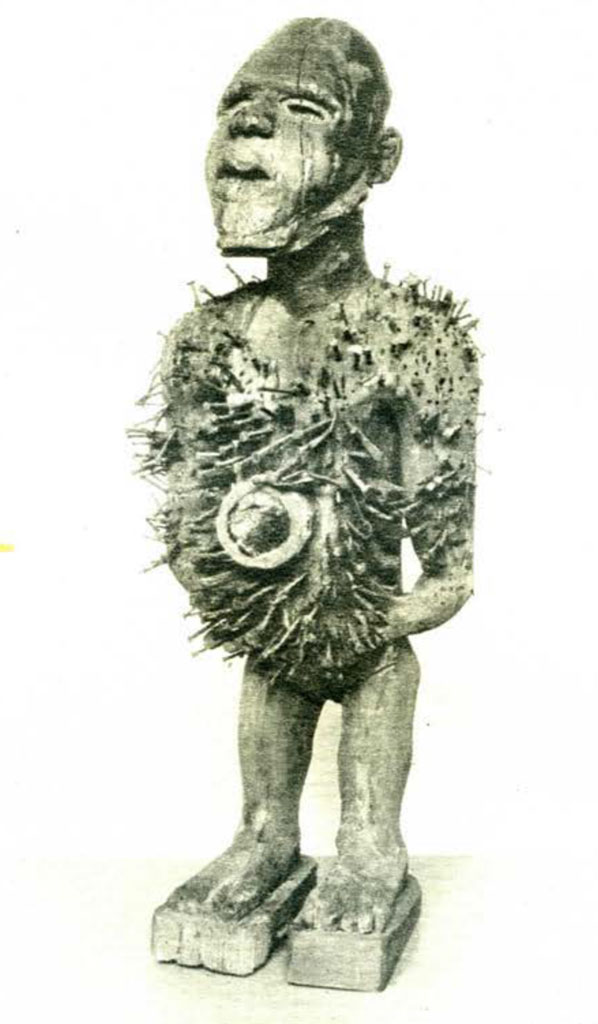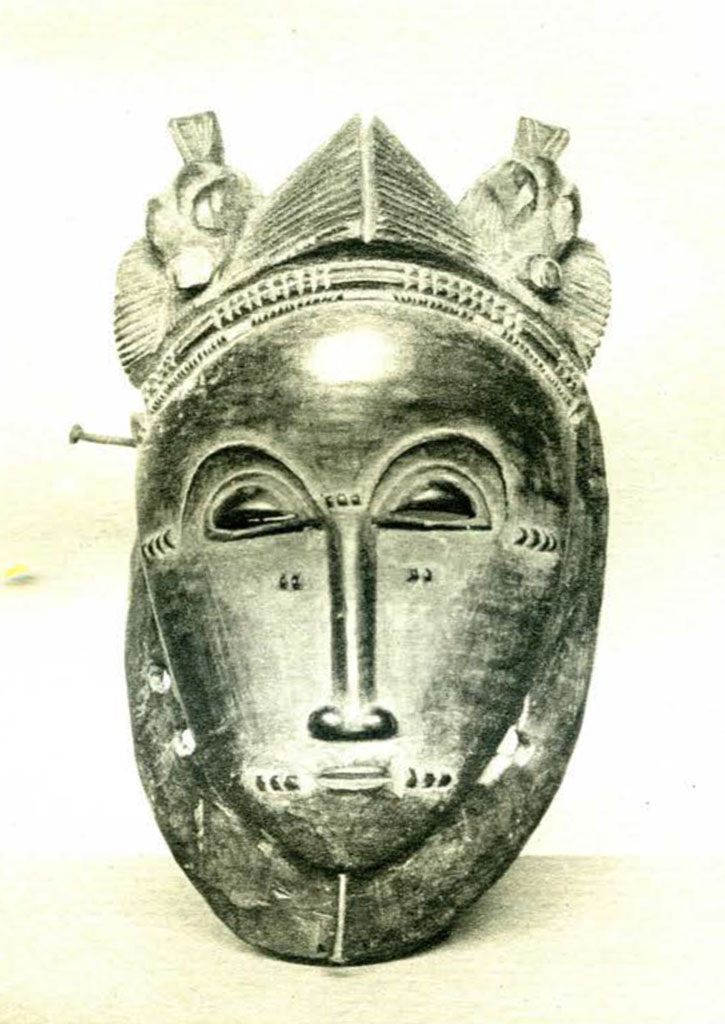
Museum Object Number: 30-46-2
Image Number: 789, 790

Image Number: 735, 736
AMONG the most prolific of negro sculptors are the people living in the countries on the lower course of the Congo. A strong, federated empire had been formed in these countries when the first Portugese adventurers arrived in the Congo in the sixteenth century. The freedom of intercourse among the provinces of the federation, which was encouraged by the fact of common political control, was, no doubt, responsible, partly at least, for a certain uniformity of style in the varied products of the woodcarver’s art, which has always flourished in these lands. Perhaps the most striking examples of this Lower Congo art are the figures usually known as nail fetishes, of which a fine specimen has just been acquired by the Museum (Plate X). This is a type of fetish which has a wide distribution through the countries which were once members of the old federal Kingdom of Congo. This variety of the type is characteristic of the province of Cabinda, a strip of Portugese territory on the coast just north of the mouth of the Congo River. A nail fetish has a number of different uses. The large examples were usually “community fetishes,” employed publicly in the detection of crime. But these also, like the smaller ones, were at the disposal of such private persons as could pay a fee to the “medicine man” who controlled them. The victim of a theft or of disease or a person who wished to inflict an injury on an enemy was allowed, on feeing the master of the fetish, to drive a nail or other pointed iron object into the figure, whose power or influence imprisoned in the casket of “medicine” attached to the body of the figure, was released by this act. Illness and even death then followed for the person responsible for the injury in question or designated to suffer from the enmity of the nail-driver-unless the matter were arranged with the medicine man. He could be induced, by the mediation of powerful friends of the person affected or by the payment of a countervailing fee, to withdraw the nail and so to interrupt the stream of evil influence.
A beautiful Ivory Coast mask (Plate XI) has been added to the others from French West Africa which were lately acquired for the African collections. It is of the type which represents the gods and half-gods of the Baule people, who are famous among the inhabitants of the interior of the Ivory Coast colony for the number and fine style of their wood carvings. Other examples of these carvings, which are now so well represented in the Museum, were described and illustrated in several of last year’s Bulletins.

